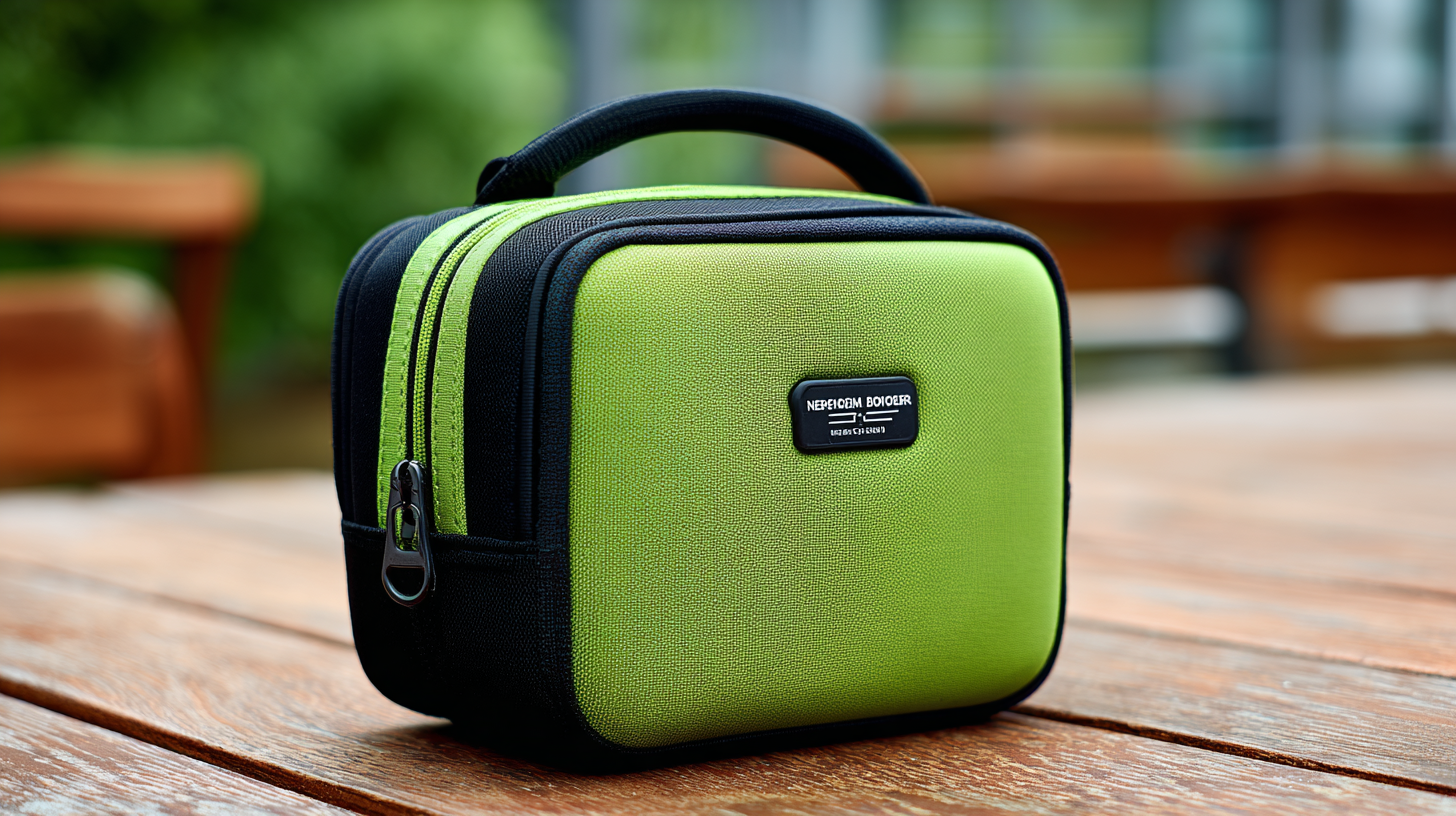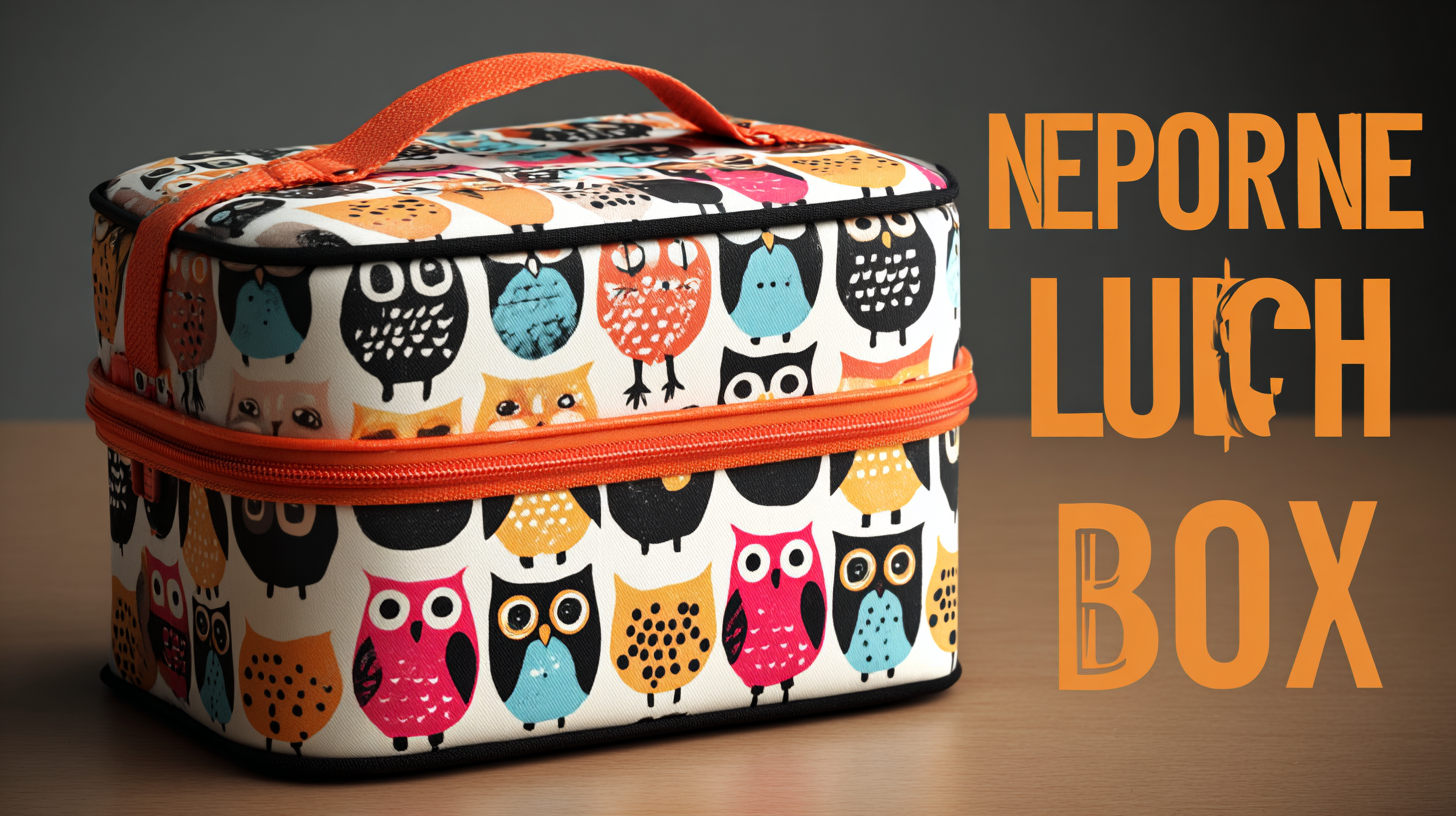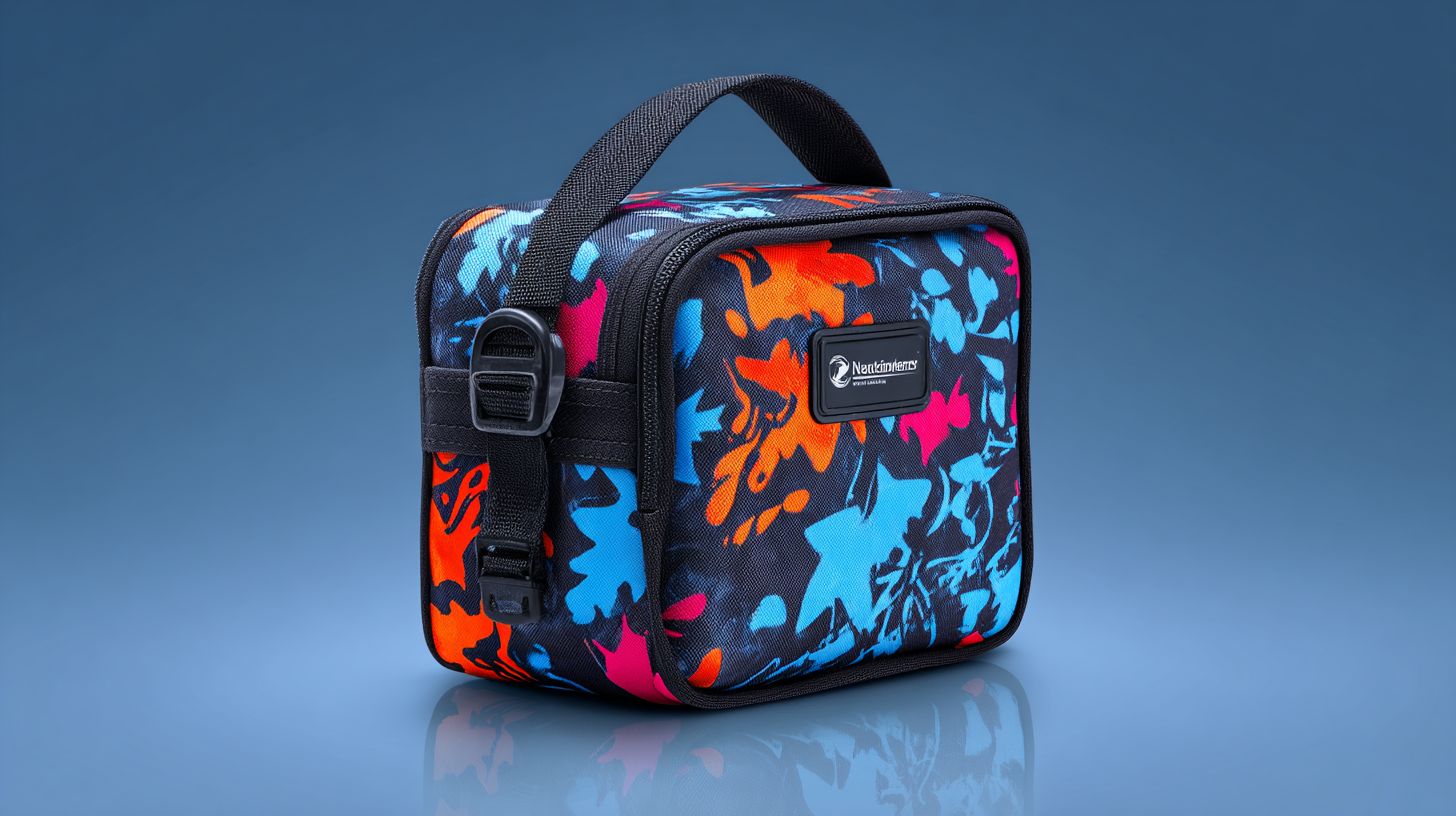In today's fast-paced lifestyle, the importance of choosing the right Neoprene Lunch Box cannot be overstated, especially for global buyers seeking quality and innovation. The global lunch box market, projected to reach USD 2.6 billion by 2027, highlights the growing demand for functional and stylish meal containers (Source: Market Research Future). Among various materials, neoprene stands out for its durability, insulation properties, and lightweight design, making it an ideal choice for preserving food temperature and freshness.

As consumers become more health-conscious and environmentally aware, the preference for sustainable packaging solutions has surged, further propelling the popularity of neoprene lunch boxes. With China's manufacturing prowess leading the charge, producing high-quality neoprene products that cater to international standards, it's no wonder that these lunch boxes are not only a practical choice but also a global trend. This guide aims to help buyers master their lunchtime by navigating through essential features and considerations when selecting the best Neoprene Lunch Box in the market.
When selecting a neoprene lunch box, it's essential to understand the unique properties of neoprene material. Known for its durability and flexibility, neoprene is a synthetic rubber that effectively insulates food and keeps items at the desired temperature for longer periods. This makes it an excellent choice for lunch boxes, allowing you to enjoy your meals fresh and at the right temperature, whether hot or cold. Neoprene's lightweight nature also contributes to the ease of carrying, making it ideal for daily commutes or picnics.
However, while neoprene offers various advantages, there are also some drawbacks to consider. One of the major concerns is that neoprene can be less breathable than other materials, which may cause moisture to accumulate inside the lunch box. This could potentially lead to an unpleasant odor if not cleaned regularly. Additionally, neoprene is not entirely waterproof, so it's crucial to ensure any leaks from food containers are contained. Finally, the material can be more expensive than standard insulated lunch boxes, which may be a consideration for budget-conscious buyers. Understanding these pros and cons will help you make an informed decision when investing in a neoprene lunch box.
When selecting a high-quality neoprene lunch box, there are several key features to consider that can significantly improve your lunchtime experience. Firstly, insulation is crucial; a well-insulated neoprene lunch box will keep your food hot or cold for hours. Look for products with thick neoprene material that not only provides temperature retention but also adds durability and flexibility. This ensures that the lunch box can withstand everyday wear and tear while maintaining its shape.
Another important feature to examine is the design and accessibility of the lunch box. Opt for lunch boxes with multiple compartments or pockets; this allows for better organization of your meals and snacks. Additionally, check for user-friendly closures such as zippers or Velcro that make it easy to access your items without fuss. Comfort is also essential—consider padded handles or adjustable straps for easy carrying. By focusing on these key attributes, you will find a neoprene lunch box that meets your needs and enhances your lunchtime routine.

 When it comes to choosing the ideal neoprene lunch box, understanding the top brands on the market is crucial for global buyers. A comparative analysis reveals that brands like PackIt, Bentgo, and Lifewit have carved out a niche for themselves with innovative designs and functionality. PackIt, for instance, is recognized for its built-in freezable gel, which helps keep food cold for hours, making it perfect for hot climates and long days at work or school. Their stylish patterns and eco-friendly materials also cater to a diverse consumer base.
When it comes to choosing the ideal neoprene lunch box, understanding the top brands on the market is crucial for global buyers. A comparative analysis reveals that brands like PackIt, Bentgo, and Lifewit have carved out a niche for themselves with innovative designs and functionality. PackIt, for instance, is recognized for its built-in freezable gel, which helps keep food cold for hours, making it perfect for hot climates and long days at work or school. Their stylish patterns and eco-friendly materials also cater to a diverse consumer base.
On the other hand, Bentgo has made a name for itself with bento-style containers that are both user-friendly and aesthetically pleasing. Their lunch boxes often come with compartments, allowing for a balanced meal without mixing flavors. Bentgo products also emphasize sustainability, appealing to the environmentally conscious buyer. Lifewit, with its affordable range of customizable options, targets budget-conscious consumers while still offering quality insulation and durable construction. By understanding the unique attributes of these brands, buyers can make informed decisions that best suit their lifestyles and needs.
Sustainability in the manufacturing of neoprene lunch boxes is becoming paramount as consumers increasingly prioritize eco-friendly products. According to a recent report by Grand View Research, the global eco-friendly lunch box market is expected to reach USD 4.3 billion by 2026, with a CAGR of 5.8%. This surge is indicative of a broader shift towards sustainable materials in consumer goods, driven in part by heightened awareness of environmental issues.
The production of neoprene, traditionally derived from petroleum, is evolving with the rise of innovative sustainable alternatives. Companies are now exploring plant-based neoprene and recycled materials, which have shown significant promise in reducing carbon footprints. For instance, the Sustainable Apparel Coalition’s Higg Index identifies that the use of recycled materials can reduce water usage by up to 90%, highlighting the potential impact of sustainable practices in the lunch box sector. As brands continue to adopt greener manufacturing processes, it is essential for consumers to pay attention to the materials and production methods of the lunch boxes they choose, contributing positively to environmental stewardship.
| Feature | Importance | Sustainability Rating | Market Trend (%) |
|---|---|---|---|
| Material Quality | High | A | 15% |
| Insulation Performance | Very High | B+ | 10% |
| Durability | High | A- | 12% |
| Design Versatility | Medium | B | 20% |
| Recyclability | Critical | A | 18% |
| Weight | Low | B- | 14% |
When it comes to selecting the perfect neoprene lunch box, understanding consumer preferences across different demographics is essential. Research indicates that age plays a significant role in the design and functionality that buyers seek. Younger consumers tend to gravitate towards vibrant designs and multifunctionality, often looking for lunch boxes that can double as trendy bags for work or school. In contrast, older demographics prioritize practicality and durability, favoring colors and designs that align with a more classic aesthetic.
Additionally, lifestyle factors, such as professional versus student status, significantly influence choices. Busy professionals often prefer larger, insulated lunch boxes that can accommodate multiple meals, enhancing convenience and reducing the need for multiple containers. On the other hand, students frequently seek lightweight and compact designs that fit conveniently in backpacks. Furthermore, environmental consciousness is increasingly shaping preferences, with many buyers showing a strong inclination towards eco-friendly materials and brands that promote sustainability, reflecting a growing awareness of health and environmental issues that transcend demographic boundaries.
